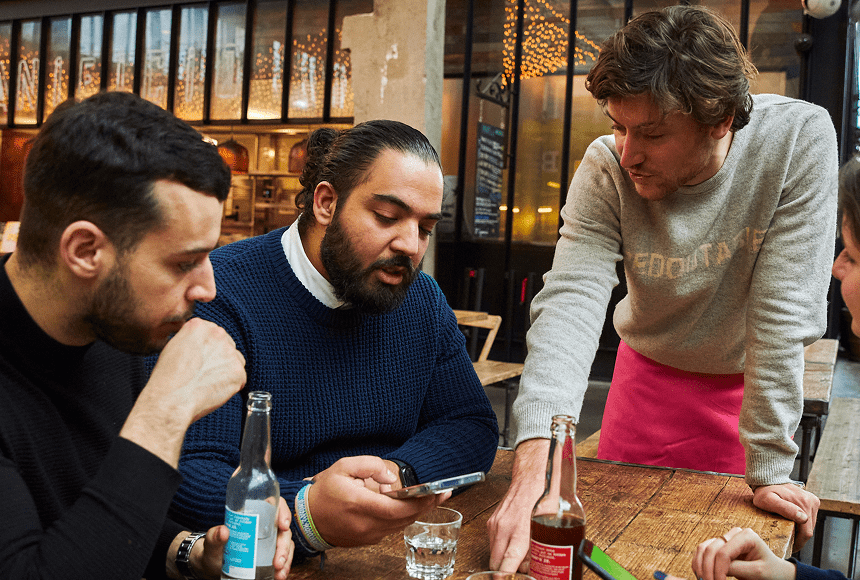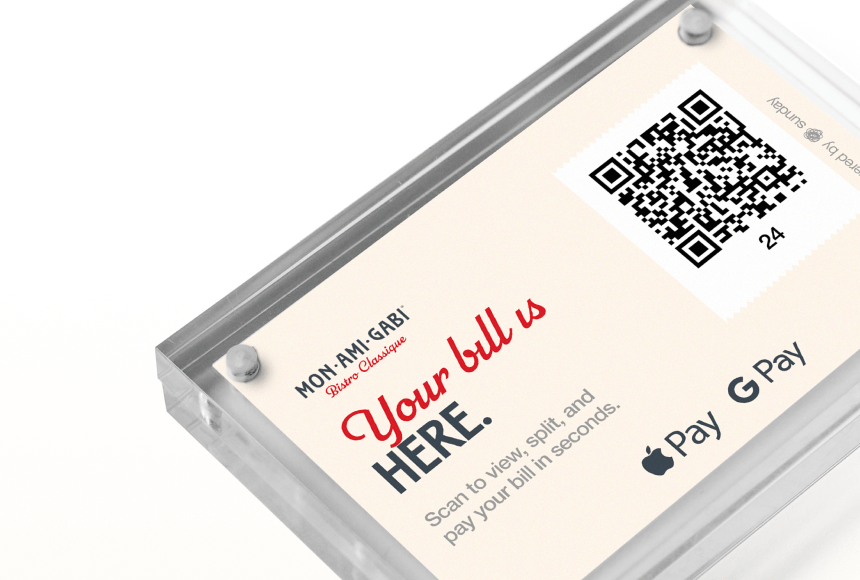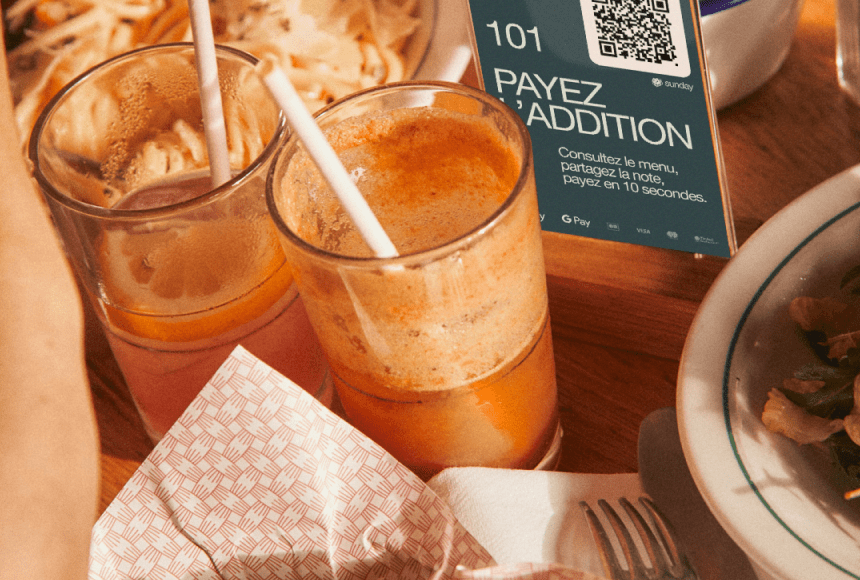How QR Code Menus Lighten the Load in Your Dining Room
Why the Restaurant Industry Demands Innovation
The restaurant industry in the United States has undergone major transformations in recent years, shaped by shifting consumer habits, labor market challenges, and rapid technological advancements. You have probably felt these changes first-hand. The pandemic accelerated the need for contactless service, staffing shortages led to overwhelmed teams, and heightened customer expectations put even more pressure on daily operations.
According to the US Bureau of Labor Statistics (https://www.bls.gov), the hospitality sector continues to face high turnover rates. That turnover leaves you juggling more tasks with fewer hands. At the same time, guests demand swift, personalized service, which can be difficult to deliver when each server is rushing from table to table. You might find yourself asking: “How can I make my restaurant more efficient without sacrificing service quality?”
Enter QR code menus. This simple yet powerful solution can significantly reduce staff workload while enhancing your guests’ experience. From immediate menu access to direct ordering and payment on guests’ mobile devices, these tech-driven menus have the potential to lighten the load in your dining room and help your business thrive, even when faced with limited staffing.
QR Code Menus 101
Before diving into how QR code menus can reduce staff workload, let’s break down exactly what a QR code menu is. Picture those small black-and-white pixel squares. Guests simply point their smartphone camera at the code, and—voilà—an online menu appears on their screen.
Here’s what you need to know in a nutshell:
- Fast Access: No more waiting for a physical menu. Customers can scan the code and start browsing your offerings immediately.
- Real-Time Updates: Ran out of the day’s special? Update the digital menu instantly—no need to print fresh versions.
- Reduced Contact: The digitization of menus keeps hand-to-hand menu exchanges to a minimum, ideal not only in pandemic times but also for overall hygiene.
- Order and Pay: Modern QR code solutions can link directly to ordering and payment systems, letting your guests handle the entire dining journey on their devices.
It might seem like a small tweak to the traditional dining process, but the impact spreads across staff scheduling, table turnover, and even tipping habits. The good news is that implementing a QR code menu is often simpler than you might expect, requiring nothing more than a stable internet connection and a platform that integrates with your POS or payment terminal.
Key Ways QR Code Menus Reduce Staff Workload
You might be thinking: “Yes, digital menus are convenient. But how do they actually reduce my team’s workload?” The answer lies in the range of tasks that a QR code menu can streamline—from seating guests to processing payments.
Accelerated Seating and Order Placement
A classic source of bottlenecks is that “awkward moment” after seating guests, when they wait for someone to either bring a menu or highlight the daily specials. With a QR code menu, the moment they take their seats—or even while they queue up if you make the code visible in the waiting area—they start browsing. This instant access relieves your servers from the initial rush and ensures guests are ready to order sooner.
Less time spent handing out menus and describing specials frees your servers to skip straight to the interaction that matters: advising guests, personalizing the experience, and upselling where appropriate. In many cases, the guest who’s ready to scan a QR code is also ready to place an order without waiting for the server to circle back. You effectively cut out a step that usually requires staff involvement, and that means fewer delays.
Faster Table Turnover
When your floor is busy, and the dining room is buzzing, every step that speeds up service matters. QR code menus let guests move from perusal to ordering more rapidly, preventing those dead moments where everyone is ready to eat but still awaiting the server’s attention. A faster order translates into a quicker meal, which naturally leads to more efficient table turnover. That doesn’t mean rushing the customer—it simply means smoothly eliminating bottlenecks.
The reward? You serve more guests in the same amount of time without compromising on quality. Servers also get some breathing room, because they spend less time dealing with an overly long queue of requests. If you multiply that effect over multiple tables, the benefit to your team’s workload can be enormous.
Streamlined Service Steps
In traditional settings, servers juggle multiple steps per table: handing out menus, taking orders, double-checking modifications, bringing out the food, clearing plates, and finally settling the check. Digital menus and integrated ordering reduce some of these tasks.
- Fewer Trips to the Table: Rather than going back and forth to hand out physical menus or take orders, servers can focus on fulfilling requests and ensuring guest satisfaction.
- Automated Order Entry: Digital orders go straight to your POS or kitchen display system (KDS), minimizing the chance of mistakes and saving time that would be spent on manual entry.
- Fewer Interruptions: Because your guests can often reorder items—like a second round of drinks—directly through the QR code interface, your servers aren’t scrambling to catch every subtle wave of a hand for attention.
Reduced Errors and Miscommunications
We’ve all experienced the challenges when a busy server misses half of a group’s order. QR codes let the guests communicate directly with the system, minimizing the risk of misinterpretation. Because the order arrives digitally, there is less need for deciphering scribbles or hurried gestures.
Fewer mistakes mean fewer re-fires in the kitchen and fewer times you have to remake a dish. The net effect on staff workload is significant. Lost time spent apologizing or redoing an item can be better utilized delivering top-notch hospitality. Think of it like making a recipe with precise measurement tools—when you don’t have to guess, you don’t waste time (or ingredients).
Effortless Payment and Tipping
One of the most time-consuming parts of the dining journey can be payment. When teams are stretched thin, guests might be left waiting to receive or settle their check. This frustration can impact customer satisfaction, impact your online reviews, and keep your servers away from where they are truly needed—like greeting new arrivals or managing other tables.
An integrated QR code payment option solves this bottleneck. Instead of waiting for someone to bring the check and then returning later with the receipt, the customer can quickly review their bill and pay directly from their phone. This process can also encourage fair tipping because it’s easy to add a tip with a single tap or click. In fact, some operators have reported higher tip amounts because the digital interface simplifies that final gesture.
sunday, for example, offers a QR code-based payment system that invites guests to settle the check quickly and even post Google reviews right from their device. With fewer manual steps, you not only save your staff a trip or two to the table, but you also give guests the freedom to leave at their pace without feeling rushed or ignored.
Practical Steps for Introducing QR Code Menus
Implementing a QR code menu is less daunting than it might appear. Like any worthwhile change, it does require planning and a clear approach. Here are some practical steps to keep in mind as you bring this new technology into your dining room:
- Choose a Reliable Platform: Before you print any codes, ensure your chosen platform integrates smoothly with your POS system. You want real-time updates and minimal data entry for your staff. Check whether the platform offers the right customization options, from branded menu designs to allergen alerts.
- Create a Digital Version of Your Menu: This is your chance to shine. Make sure the digital menu is pleasant to navigate and well-organized, with images and detailed descriptions. Keep it updated—when you run out of items, mark them as unavailable, or remove them in real time.
- Test with a Smaller Group: Roll out QR code menus on a limited scale first—maybe at a certain section of your dining room or during slow hours. Gather feedback from guests and staff to see what’s working and where improvements could be made.
- Train Your Staff: Everyone in your team should understand how QR code menus work, from scanning codes to explaining them to less tech-savvy guests. Make sure staff members know how to troubleshoot phone-screen issues or connectivity concerns. A quick demonstration often goes a long way in smoothing out potential hiccups.
- Communicate with Guests: Place instructions on how to scan the QR code on table tents or small cards. Not everyone is familiar with digital menus, so a short, friendly explanation will help reduce confusion or hesitation.
- Maintain a Backup Option: Some guests won’t have smartphones or may simply prefer a traditional menu. Keep a few physical menus around for those who need them, ensuring they also feel valued and welcomed.
Success Story: An Independent Bistro Finds Its Rhythm
Imagine a bustling independent bistro in a popular downtown area. The neighborhood has a lively restaurant scene, and the bistro’s warm atmosphere draws in tourists during lunch and local regulars at dinner. During peak hours, the staff is constantly juggling orders, special requests, and payments, all while aiming to project a laid-back, charming vibe.
To lighten the load, the bistro’s owner decided to introduce QR code menus. They integrated these menus with the restaurant’s existing POS system, letting customers access everything from daily specials to recommended wine pairings. At first, the team worried that guests, particularly older ones, would resist the technology. But helpful signage and a straightforward design made the transition smoother than expected.
The results were impressive:
- Immediate Engagement: Customers could explore the menu even while waiting for a table. Some guests started planning their orders before being seated, cutting down the time servers spent offering initial explanations.
- Fewer Ordering Mistakes: Because the orders went directly to the kitchen through the digital platform, the staff significantly reduced instances of incorrect orders. Bartenders also reported fewer missing beverage requests.
- Relaxed Staff: While “relaxed” might seem like an exaggeration in foodservice, servers reported feeling less overwhelmed. They spent more time chatting with guests, giving recommendations, and perfecting the overall atmosphere instead of scurrying around delivering menus.
- Boosted Revenue: The ease of adding extra items—like a dessert or an additional appetizer—spontaneously led to higher sales. Guests could quickly browse the sweets list without needing to catch a server’s attention. It encouraged impulse orders that added to the bottom line.
More than a year later, the bistro continues to use QR code menus. They keep a small stack of physical menus for customers who prefer them, but the majority have eagerly embraced digital ordering. The bistro’s owner credits the change with helping the restaurant maintain an inviting feel, even when they struggle to staff enough servers for their busiest shifts.
The Value of Going Digital Beyond Efficiency
It’s easy to assume QR code menus primarily benefit staff, but the reality is that everyone wins. Guests get a sleek, responsive dining experience that caters to their impatience and digital lifestyles. Managers see smoother service cycles and reduced overhead. Meanwhile, individual servers face less pressure to handle multiple tasks at once and can focus on delivering genuine hospitality.
But there’s more. Going digital opens the door to data-rich insights. Some QR code platforms let you see which items are most viewed, how often guests click on certain dishes, or even track ordering patterns over time. When you can spot a dip in interest for a specific entrée, you’ll know exactly which item to remove or revamp.
Additionally, a digital environment is perfect for cross-promotion. Want to highlight an event, build a relationship with a local winery, or push your new brunch menu? A QR code platform can be updated with banners that catch the guest’s eye. You elevate your marketing game without adding extra print costs or staff workload.
Overcoming Common Concerns
Despite the advantages, you might still have reservations about incorporating QR codes into your daily operation. Let’s tackle a few concerns head-on:
- “My Guests Aren’t Tech-Savvy.” You might be surprised! QR codes are so common now that even a less tech-oriented guest often knows how to scan one. A simple table-side guide helps ease any worries.
- “I Don’t Want to Lose the Personal Touch.” Technology doesn’t replace great service—it frees you up to offer more of it. By reducing time-consuming tasks, your team can engage more meaningfully with guests.
- “What If My Internet Goes Down?” Make sure you have a reliable setup and keep physical menus as a backup. Train staff on how to switch to a backup system if the network has a hiccup.
- “Will People Feel Pressured to Tip More or Less?” Digital tipping can actually simplify and encourage fair gratuities. Guests have the freedom to pick from suggested ranges, and they often appreciate the clarity of a single click to finalize their tip.
Taking the Leap
If you’re still on the fence, think about your restaurant’s long-term resilience. Technology is no longer a novelty but a critical part of the dining experience. From the moment customers walk in, a thoughtfully implemented QR code system can transform their journey from start to finish. It’s like adding a chef’s special sauce to your entire workflow—a pinch of digital spice can upgrade everything.
Start small. Experiment. Gather feedback. Refining the process now can pay dividends later in happier guests, less stressed employees, and a smoother overall operation. In the end, the greatest benefit is that your staff can focus on what truly matters: serving up memorable meals in a welcoming atmosphere.
FAQ: Frequently Asked Questions
Do I need specialized technology to launch QR code menus?
Many QR code menu solutions require only a stable internet connection, a device that can generate QR codes, and a platform that integrates with your POS system or payment terminal. Most smartphones can scan QR codes without any extra apps, making the process seamless for guests.
Will QR codes work for my smaller neighborhood restaurant?
Absolutely. In fact, smaller establishments often benefit the most, because every staff member typically wears multiple hats. QR codes reduce the number of routine tasks on the server’s plate, allowing for more meaningful customer interactions despite a lean team.
How do I ensure my QR code platform is easy to use for all ages?
Provide clear instructions right at the table—short text explanations or icons illustrating how to open the camera and scan the code. Offering a physical menu option for those who aren’t comfortable with digital formats also keeps customers happy.
What if my internet goes down during service?
It’s important to maintain a backup plan. Keep a small set of printed menus available and train your staff to seamlessly pivot to the traditional ordering method. Reliable Wi-Fi or a failsafe LTE hotspot can also help prevent complete interruptions.
Is it expensive to maintain a QR code menu?
Costs vary depending on your chosen platform, but most QR code systems are surprisingly affordable. You also save on the printing and reprinting costs associated with ever-changing menus, which can offset part of the subscription or integration fees.
Does this technology really relieve staff, or just shift their workloads?
By automating tasks like taking orders and handling payments, you free up staff from repetitive steps. That time and energy can go into enhancing hospitality, managing food prep more effectively, or simply providing better customer service. It’s a genuine reduction in workload, not merely a shift.
How can QR codes boost my revenue?
When customers have easy, instant access to your full menu, they’re more likely to explore add-ons, specials, and desserts without waiting to see if a server has time to return. Many restaurants also find that digital payment processes encourage more consistent tipping, which can improve servers’ morale and retention.
From labor shortages to changing diner expectations, restaurant owners face a variety of challenges. Adopting digital tools like QR code menus is an efficient, guest-friendly way to keep your team energized and your customers satisfied. By cutting down on repetitive tasks, minimizing errors, and speeding up both ordering and payment, these menus truly lighten the load—and empower you to focus on what you do best: delivering an unforgettable dining experience.
Find out more today
Drop us your details below and we’ll reach out within the next 24h
Find out more today
Drop us your details below and we’ll reach out within the next 24h




